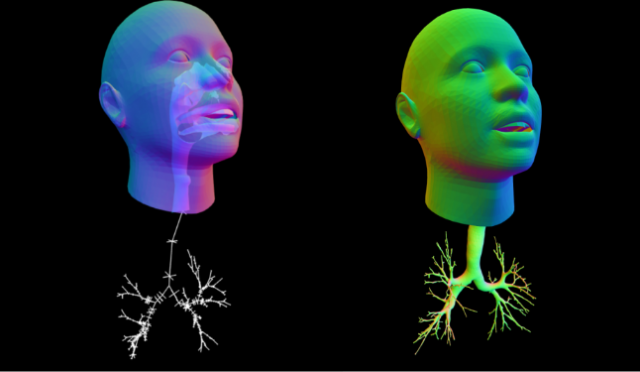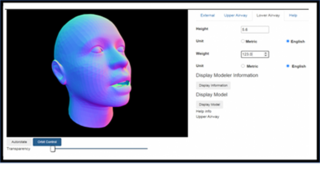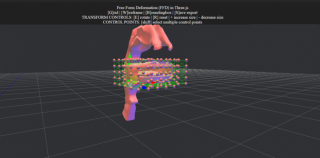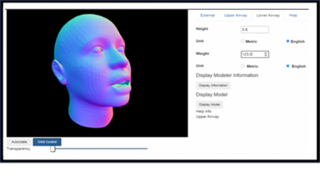Human Respiratory System Model

On This Page:
- What is the Human Respiratory System Model?
- Who should use the model?
- What can the model be used to do?
- How does the model work?
- Model Specifics
- System Requirements
- Access the Model
- Model Instructions
- Related Publications
- Technical Contact
What is the Human Respiratory System Model?

The Human Respiratory System Model is a 3-D surface mesh of the human respiratory system from the tip of the nose to the lower lung regions. The model is based on human scan data and can be adapted to account for age, ethnicity, height, weight and sex. This novel, publicly available model is an important advancement in the field of aerosolized contaminant transport, deposition, and clearance in the human respiratory system.
Who should use the model?
The model is intended for researchers who need a surface mesh model that can be used as the basis for flow models to investigate dosimetry and inhalation toxicology for general and sensitive populations such as children, the sick, and the elderly. The model can also be used for therapeutic purposes such as drug delivery and to determine exposure to, or dose from, hazardous contaminants where inhalation studies on humans cannot be conducted.
What can the model be used to do?
This highly adaptable model may be used for several research purposes:
- Visualizing respiratory flow from the tip of the nose to the lower lung regions.
- Investigating dosimetry and inhalation toxicology for general and sensitive populations such as the diseased and the elderly.
- Determining exposure/dose determinations for aerosol-based drugs.
- Planning for oral/nasal/lung surgery.
- Determining exposure to hazardous contaminants (e.g., anthrax, ricin) where inhalation studies on humans cannot be conducted.
- Reducing animal and human use in experimental testing, thus reducing testing times as well as costs.
How does the model work?
The model's user interface enables researchers and the broader health community simplified access to this model and the associated data. The user inputs specifics such as sex, age, and the physical parameters they are investigating into the interface. A surface model is then generated that includes the nasal and oral cavities, pharynx, larynx, trachea, and three airway paths, an average of 23 generations deep, into each of the five lobes. This specific surface model is then exported to a standard stereolithography (STL) CAD file format. This file can then be downloaded by the user. Using the interface, the researcher can modify internal face morphology to match external facial features, thus allowing for model customization.
Stage 1
In Stage 1, the user sets parameters for sex, race, and age of the external representation of the soft tissue.

Stage 2
Stage 2 allows the user to modify the upper internal airway of the respiratory system, includes the nasal, oral cavity, pharynx, larynx, and upper trachea.

Stage 3
Stage 3 requires the user to indicate the height and weight of the subject. These values determine the scaling of diameter of three paths with length of the bronchiole passages from the trachea 23 generations into the five lobes.

The Generated Model
The generated surface mesh includes the nasal, oral cavity, pharynx, larynx, trachea, bronchioles, and three paths (23 generations deep) into each of the five lobes. The final combined model will be saved to a stereolithography (STL) surface mesh file that may be downloaded.

Model Specifics
- The human respiratory system model incorporates the extrathoracic region, as well as the tracheobronchial and peripheral airways of the lung.
- The model addresses sex, age, and human physiology from the nares through the ninth generation of the lung. Algorithms that learn from the upper lung generation data (generations 0-9) are then used to develop the 10th-23rd generations needed to complete the lung.
- Multiple sets of human data were used to ensure the model is representative of the general population. Previously identified surface or physiological anomalies due to scan inaccuracies, movement, resolution, and/or human disease have been removed.
- The model allows for nasal or mouth breathing with a physiologically accurate mouth, tongue, gums, and uvula.
- The complete model physiology allows for expansion and contraction during the breathing process.
System Requirements
Before running the model, please verify that your system meets the following minimum requirements.
Compatible 64-bit operating systems:
- Windows 10 and up
- macOS 10.5 and up
- Linux
Hardware:
- 8 GB RAM (16 GB recommended for faster performance)
- Recommended: A dedicated graphics card with latest drivers and at least 1GB video RAM, capable of supporting OpenGL 4.5 and DirectX 11, or higher.
Web Browser:
-
Google Chrome, Microsoft Edge, Mozilla Firefox, or other compatible modern browser.
- Recommended: fast internet connection: A modeling file of approximately 100MB will be downloaded at the end of the session. A fast internet connection will increase download speed.
Access the Model
Model Instructions
Related Publications
Technical Contact
If you have a question regarding the model, contact:
Jacky Rosati Rowe
rosati.jacky@epa.gov
